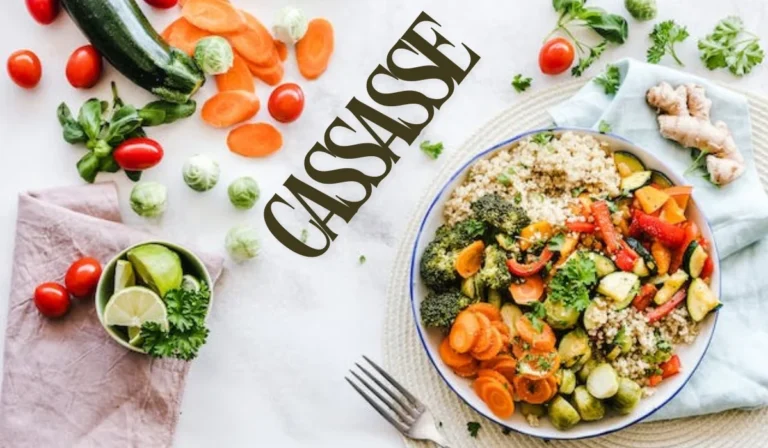Introduction to Cassava
Table Of Contents
- 1 Introduction to Cassava
- 2 Types and Categories of Cassava
- 3 Nutritional Profile of Cassava
- 4 Symptoms and Signs of Cassava Poisoning
- 5 Causes and Risk Factors for Cassava Poisoning
- 6 Diagnosis and Tests for Cassava Poisoning
- 7 Treatment Options for Cassava Poisoning
- 8 Preventive Measures for Cassava Poisoning
- 9 Cultivation and Harvesting of Cassava
- 10 Economic Importance of Cassava
- 11 Personal Stories or Case Studies
- 12 Expert Insights on Cassava
- 13 Technological Advances in Cassava Cultivation
- 14 Future Prospects of Cassava
- 15 Conclusion:- cassasse
Definition and Origin
cassasse (Manihot esculenta) is a perennial woody shrub with an edible root, belonging to the Euphorbiaceae family. Originating from the Amazon basin, cassava has become a crucial food source in many tropical regions around the globe.
Relevance and Importance
Cassava is a vital crop for food security, particularly in regions prone to drought. Its ability to grow in poor soils and under harsh climatic conditions makes it an invaluable resource for millions of people.
Types and Categories of Cassava
Sweet Cassava
Sweet cassava varieties contain lower levels of cyanogenic glycosides, making them safer for direct consumption after cooking.
Bitter Cassava
Bitter cassava varieties have higher cyanogenic glycoside levels, requiring extensive processing to reduce toxicity before they can be safely consumed.
Nutritional Profile of Cassava
Macronutrients
Cassava is a rich source of carbohydrates, primarily in the form of starch. It provides a significant amount of energy, making it a staple food in many regions.
Micronutrients
While not particularly high in protein, cassava contains essential vitamins and minerals such as vitamin C, thiamine, riboflavin, and niacin.
Health Benefits
Cassava’s nutritional profile supports energy needs and provides antioxidants that help in maintaining overall health.
Symptoms and Signs of Cassava Poisoning
Common Symptoms
Consumption of improperly processed cassava can lead to cyanide poisoning, presenting symptoms such as headaches, dizziness, and nausea.
Severe Reactions
In severe cases, cyanide poisoning from cassava can cause neurological damage, paralysis, or even death if not treated promptly.
Causes and Risk Factors for Cassava Poisoning
Biological Factors
Genetic variations in cassava plants can result in different levels of cyanogenic glycosides, influencing the risk of poisoning.
Environmental Factors
Soil type, climate, and agricultural practices can affect the cyanogenic content in cassava roots.
Lifestyle Factors
Inadequate processing methods and dietary reliance on cassava without proper education on safe preparation can increase poisoning risk.
Diagnosis and Tests for Cassava Poisoning
Medical Tests
Medical professionals can diagnose cyanide poisoning through blood tests that measure cyanide and thiocyanate levels.
Home Testing Methods
Simple home tests using chemical kits can help detect cyanide levels in cassava products before consumption.
Treatment Options for Cassava Poisoning
Medical Treatments
Immediate medical intervention involves administering antidotes like hydroxocobalamin or sodium thiosulfate to neutralize cyanide.
Home Remedies
Hydration, activated charcoal, and supportive care can be initial steps taken at home while awaiting medical assistance.
Preventive Measures for Cassava Poisoning
Proper Preparation Methods
Soaking, fermenting, drying, and thorough cooking are essential steps to reduce cyanide content in cassava.
Safe Consumption Tips
Diversifying diet and avoiding over-reliance on cassava can help mitigate poisoning risks.
Cultivation and Harvesting of Cassava
Soil Requirements
Cassava thrives in well-drained, sandy-loam soils with a pH between 4.5 and 7.0.
Planting Techniques
Cuttings from mature cassava plants are used for propagation. Planting during the rainy season ensures better growth.
Harvesting Methods
Cassava is typically harvested 8-12 months after planting. Roots should be carefully dug out to avoid damage.
Economic Importance of Cassava
Global Production
Cassava is one of the top sources of carbohydrates in the world, with significant production in Africa, Asia, and Latin America.
Economic Impact
Cassava supports millions of livelihoods through its role in food industries, animal feed, and biofuel production.
Personal Stories or Case Studies
Real-life Stories
Stories of communities in Africa who rely on cassava for sustenance highlight its importance and the need for safe consumption practices.
Lessons Learned
Case studies reveal the impact of education and technological interventions in reducing cassava-related health risks.
Expert Insights on Cassava
Medical Professionals
Doctors emphasize the importance of proper processing to prevent cyanide poisoning and the nutritional benefits of moderate cassava consumption.
Agricultural Experts
Experts discuss improved cultivation techniques and genetic research aimed at reducing cyanide levels in cassava plants.
Technological Advances in Cassava Cultivation
Modern Farming Techniques
Innovations like improved irrigation systems and pest-resistant cassava varieties enhance yield and quality.
Genetic Modifications
Biotechnology advancements have led to the development of cassava strains with lower cyanogenic glycoside content.
Future Prospects of Cassava
Predicted Trends
Increased focus on sustainable agriculture and food security will likely boost cassava’s prominence in global food systems.
Potential Developments cascade
Ongoing research aims to further improve cassava’s nutritional profile and reduce its toxic components.
Conclusion:- cassasse
Summary of Key Points
Cassava is a critical food resource with cascade significant nutritional and economic benefits. However, it requires proper preparation to avoid health risks associated with cyanide poisoning.
Call to Action
Educating communities on safe cassava processing and consumption, along with supporting agricultural innovations, can maximize the benefits of this versatile crop.
